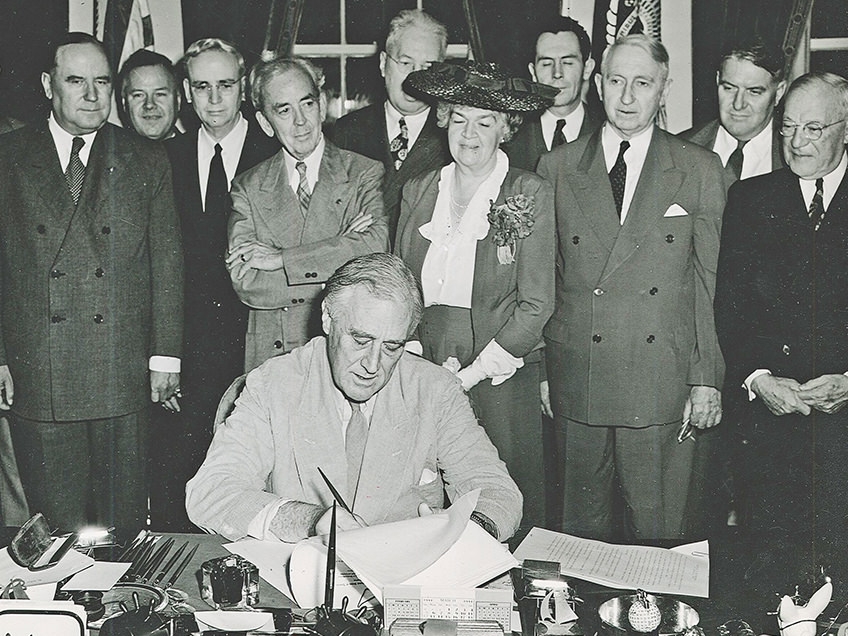
President Franklin D. Roosevelt, flanked by The American Legion special committee that drafted the bill and supportive members of Congress, signs the Servicemen’s Readjustment Act of 1944.
His signature brings to a crescendo eight months of tireless work by The American Legion, which produced more than 1,500 personal case studies in a 24-hour period and presented them to Congress, showing the lack of support for disabled World War II veterans who had come home. National Commander Warren Atherton of California had assembled a blue-ribbon special committee to conceptualize, draft and push to passage the omnibus bill that would provide education, training, business loans, home financing, timely disability compensation, hospitals, discharge review and more. Past National Commander Harry W. Colmery of Kansas drafted the bill in longhand from his room in the Mayflower Hotel in Washington, D.C., in December 1943.
Following that, with support from the Hearst newspaper empire, the Servicemen’s Readjustment Act of 1944 began a circuitous journey to the president’s desk, overcoming challenges from congressional caucuses, military branches and even some other veterans groups. It took a last-gasp search by The American Legion to find Rep. John Gibson of Georgia and fly him overnight from Jacksonville, Fla., to Washington to break a 3-3 impasse on June 10, 1944, and bring the bill out of a conference committee. Otherwise, the measure would have died there.
The GI Bill would go on to change the economic, social and military landscape of America, fueling a half-century of prosperity, democratizing higher education and building the middle class. All future renditions of the benefits package would strive to produce the same kind of impact.
